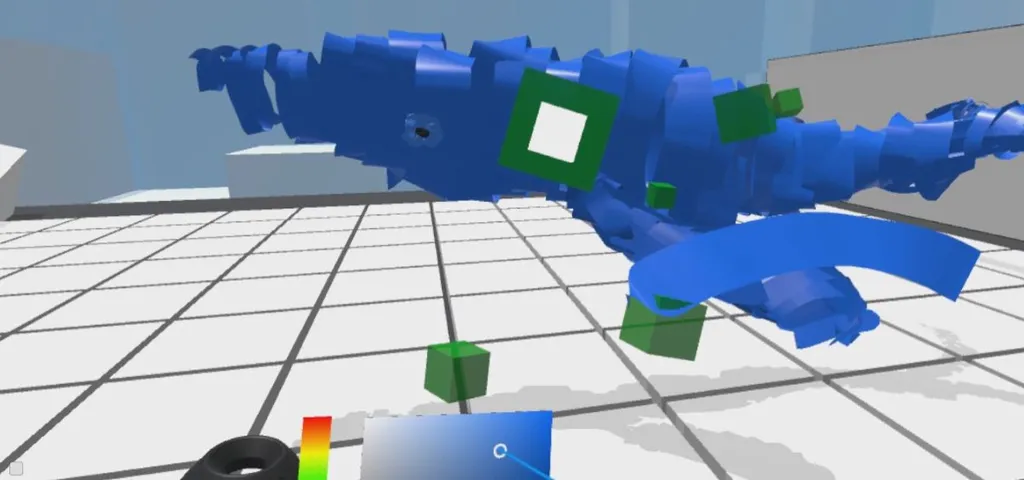The race is on to add social features to otherwise cool, but lonely, creative virtual reality experiences. One app that’s been aching for the update since it launched is Tilt Brush, the sketching software from Google. We don’t know if multiplayer is on the company’s update roadmap, but we’d be surprised if it wasn’t. Another painting app, Paintey, has the feature in a beta branch as of July 9, but the developer “cannot guarantee it’s actually working right.”
Over the weekend I downloaded a relatively small file — 25 megabytes — sent by Colorado-based developer Yoshiki Schmitz. A few minutes later I was inside an early version of Hyper Room. Schmitz toured me through the Hyper Room features, showing me multiplayer is a standard feature in a world with painting, teleportation and a white board available to visitors. The app is being released as a beta today, so if you have an HTC Vive you might want to give it a try by downloading it from the link.
We recently tested SculptrVR multiplayer, and being with someone else seems to multiply the amount of fun you can have. The resizing mechanics in the game are great for creativity, but they are also incredibly powerful for multiplayer. Instead of focusing on creation, suddenly you find yourself turning into a giant and destroying everything in the scene just because it’s that much fun to do when someone else is there with you.
Schmitz is releasing Hyper Room as a beta to get feedback from the community about where to take the software next. The painting features right now, for example, offer just a single brush type, so you’re not going to be able to get as creative as Tilt Brush just yet. Even though it’s early, it still seems like a good idea to get feedback because there are a lot of different ways for developers to go once they see how people start using their software in a multiplayer setting. Do people want to use the space for meetings? Or for creating art? Or for something else? That’s what Schmitz is about to find out.
Update: After publication I learned of additional developers in addition to Schmitz — Tanner Thayer and Jason Carter — who worked on Hyper Room at one time. The above post is updated slightly from its original version so full authorship of the software I tried isn’t assigned to a single person.





























